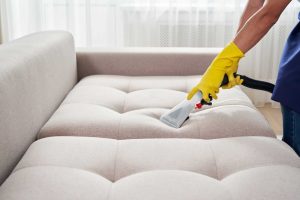Maintaining clean and well-kept furniture is essential for a comfortable and inviting home. Every season brings new challenges, from dust in the summer to moisture in the winter. A well-structured approach to cleaning ensures that your furniture remains in excellent condition throughout the year. By aligning your cleaning routine with the changing seasons, you can keep your home fresh, hygienic, and welcoming.
Refreshing Your Home in Spring

Spring is often associated with renewal, making it the perfect time to give your furniture a deep clean. After months of indoor heating, dust, and minimal ventilation, surfaces and fabrics need a thorough refresh, furniture cleaning is essential for maintaining a fresh and healthy living space. Upholstered furniture benefits from steam cleaning or vacuuming to remove accumulated dust and allergens. Wooden furniture requires gentle polishing to restore its natural shine and remove any dry, winter-induced dullness.
This season is also ideal for inspecting outdoor furniture. If you have patio sets or garden chairs, cleaning them with mild soap and water prepares them for use as temperatures rise. Fabric cushions may require washing or replacement if they have absorbed moisture or dirt over the colder months.
Curtains and drapes can collect dust and odors, making them prime candidates for spring cleaning. Washing or dry-cleaning them enhances indoor air quality. Rugs and carpets also need attention, as they trap dust and pollen brought in from outside. A professional deep clean or thorough vacuuming helps reduce allergens and refreshes the entire space.
Keeping Your Home Cool and Clean in Summer
Summer invites open windows, increased foot traffic, and more time spent outdoors, all of which can introduce dust and dirt into the home. Regular maintenance of furniture ensures that it remains in pristine condition despite these seasonal factors.
During this period, frequent vacuuming of upholstered furniture prevents the buildup of dust and pet hair. Leather furniture benefits from conditioning to prevent cracking due to heat and sunlight. Direct exposure to sunlight can cause fading in wooden and fabric furniture, so using protective covers or repositioning pieces can help preserve their appearance.
Outdoor furniture requires consistent upkeep in summer. Regular wiping down of tables, chairs, and loungers prevents dirt accumulation. If furniture is near a pool or water feature, salt or chlorine exposure can cause damage. Rinsing these surfaces regularly and using protective sprays or treatments ensures longevity.
The increased humidity of summer months can lead to mold and mildew formation on furniture, especially in poorly ventilated areas. Ensuring proper airflow, using dehumidifiers, and promptly addressing any signs of moisture damage prevent long-term issues.
Preparing for the Changes of Fall
As summer fades and cooler temperatures approach, transitioning furniture care to accommodate fall weather is crucial. This period is the time to prepare indoor furniture for more frequent use and to store outdoor pieces properly.
Cushions, hammocks, and other soft outdoor accessories should be cleaned thoroughly and stored in a dry area to prevent mold. Wicker and metal furniture benefit from protective coatings that shield them from rain and fluctuating temperatures.
Indoors, fall cleaning focuses on eliminating dust before the heating system is turned on. Dust accumulation on furniture, vents, and upholstery can contribute to poor air quality. Cleaning surfaces with appropriate products, vacuuming beneath furniture, and rotating cushions help maintain a fresh indoor environment.
Seasonal decor also plays a role in furniture care. As blankets, throws, and decorative pillows make their way into living spaces, washing or airing them out before use ensures cleanliness. Rugs may need to be adjusted or replaced to accommodate heavier foot traffic as people spend more time indoors.

Protecting Furniture During Winter
Winter presents unique challenges, particularly with increased indoor heating and reduced ventilation. These factors can lead to dry air, causing wooden furniture to crack or warp. Using humidifiers helps maintain moisture levels and prevents damage to wooden surfaces.
Regular dusting and cleaning are necessary during winter, as closed windows lead to stagnant air and trapped allergens. Upholstered furniture benefits from frequent vacuuming, and leather furniture requires conditioning to retain its flexibility.
Mud, snow, and moisture from wet shoes can also affect furniture, especially near entryways. Placing mats and rugs in high-traffic areas reduces the amount of dirt tracked into the home. Cleaning spills and stains immediately prevents long-term damage to fabrics and wooden surfaces.
For those with pets, winter means more indoor time, leading to increased shedding and potential odors. Using pet-friendly fabric sprays and keeping furniture covered in designated pet-friendly areas helps maintain cleanliness.
If holiday decorations are part of your winter routine, ensuring that furniture remains protected from scratches, spills, and excess weight prevents unnecessary wear. Using coasters, table runners, and furniture-safe adhesives keeps surfaces free from damage.

